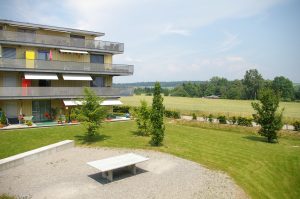By Roger Keil
We are in the middle of a suburban revolution. It comes in two waves. The majority of migrants from distant shores or the domestic countryside end up on the edges of the metropolis. Existing suburbs that already contain most of the people and economic activities in many urban regions are subject to rapid restructuring and change.
Driven by an ever-changing rhythm of growth and decline, urbanization produces many competing forms. Suburbanization is one of them. In Canada, as the Atlas of Suburbanisms, produced by researchers based at the University of Waterloo shows, diversity of suburban development abounds both demographically and in settlement patterns across the nation. The Atlas is one outcome of a large, long term research project at the City Institute at York University – Global Suburbanisms, Governance, Land and Infrastructure in the 21st Century. Funded by the Social Sciences and Humanities Research Council, the project is holding a major international conference in Toronto at the end of September.
 This research points to important consequences for how we map out our collective lives. Following Suburban Constellations, a book produced by the researchers, it is unlikely that the majority of future urban dwellers, old and new, will live dense, walkable environments any time soon. While many newly emerging suburbs are becoming complex functionally differentiated, and socio-economically mixed metropolitan structures, traditional suburbs have experienced a resurgence. On this continent alone, only a few years after they were considered ground zero of the global financial crisis, suburbs are suspended between climate change denial and the realization that adaptation to the challenges of global warming has to begin, as Andrew Ross has reminded us, in the most unsustainable place of all: the North American suburb.
This research points to important consequences for how we map out our collective lives. Following Suburban Constellations, a book produced by the researchers, it is unlikely that the majority of future urban dwellers, old and new, will live dense, walkable environments any time soon. While many newly emerging suburbs are becoming complex functionally differentiated, and socio-economically mixed metropolitan structures, traditional suburbs have experienced a resurgence. On this continent alone, only a few years after they were considered ground zero of the global financial crisis, suburbs are suspended between climate change denial and the realization that adaptation to the challenges of global warming has to begin, as Andrew Ross has reminded us, in the most unsustainable place of all: the North American suburb.
Critical urbanists have traditionally not held things suburban in high regard. It is wise to stay suspicious but there is a need to reevaluate the emerging suburban revolution as an important part of material urban life now and in the future. The researchers in Global Suburbanisms share the assumption that much if not most of what counts as urbanization today is actually peripheral. Among the big story-lines in historic and current suburbanization are governance, land and infrastructure. Governance is central as suburbanization and democratization have often been linked ideologically (as much as suburbs have also been criticized for destroying the very public spaces on which democratic affairs so centrally rely). Land is the first commodity that is produced before we can even speak about suburbanization as a real process. Its production is key to the extension of cities. Infrastructures are both preconditions for and always lacking in the rapidly extending settlements around the world.
 The global suburban landscape now has a kaleidoscopic appearance. Suburbs are everywhere but they are not the same in all places: the forms, functions, and relations of various suburban traditions get merged and reassembled in new ways. While the state and the market have been the big players in building and rebuilding of suburbs over time, the periphery has also been a fertile ground for self-built urbanism. From Toronto’s working class suburbs early in the twentieth century to the pop-up urbanism of squatter settlements in Africa or Latin America today, individuals and communities have universally employed sweat equity to build residential neighborhoods in the geographical margins of cities.
The global suburban landscape now has a kaleidoscopic appearance. Suburbs are everywhere but they are not the same in all places: the forms, functions, and relations of various suburban traditions get merged and reassembled in new ways. While the state and the market have been the big players in building and rebuilding of suburbs over time, the periphery has also been a fertile ground for self-built urbanism. From Toronto’s working class suburbs early in the twentieth century to the pop-up urbanism of squatter settlements in Africa or Latin America today, individuals and communities have universally employed sweat equity to build residential neighborhoods in the geographical margins of cities.
With the changing suburbs our conceptions of them shift, too. We begin to look at cities more from the outside in than from the inside out. We abandon the Northern industrial city as the model of urbanization and invite alternate perspectives informed of the perplexing variety of suburbanity in the Global South. Today, perhaps Cape Town’s Mitchell’s Plain more than Toronto’s Don Mills is the true icon of contemporary suburbanization. We arrive then at a central point of our research: The suburban revolution is a good place to start an intellectual journey that will rewrite the history of urban studies for the 21st Century.

